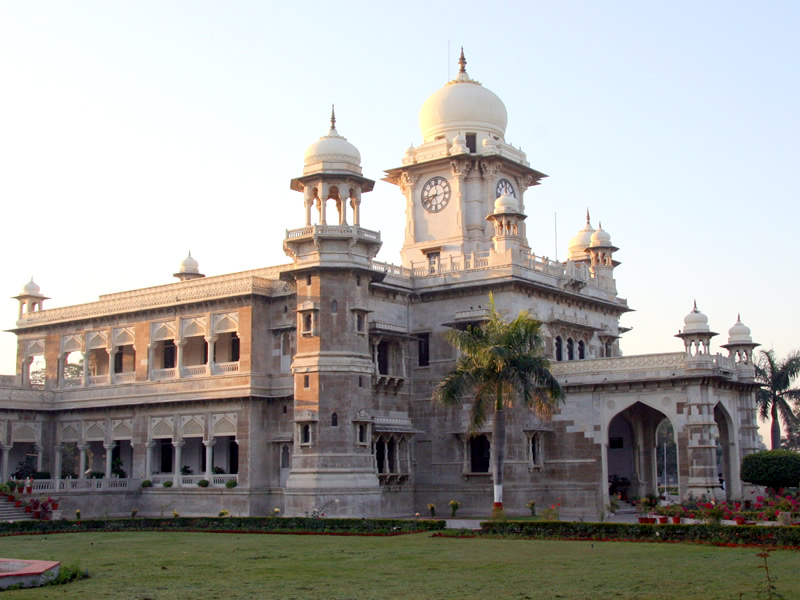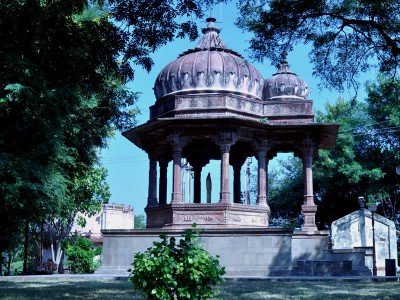Madhya Pradesh Travel and Tourism Guide
Madhya Pradesh is associated with some famous names in Indian history. The great Emperor, Ashoka, began his career as the Viceroy of Ujjain. He laid the foundation of the Great Stupa at Sanchi in the third century B.C. The Maurya Empire, of which Ashoka was the most famous ruler, collapsed shortly after his death.
The Sungas became the dominant power in Central India in the second and first centuries B.C. It was during this period that the Great Stupa at Sanchi was enlarged and the other Stupas built.
The major portion of Central India formed part of the Gupta Empire (300 to 510 A.D.). This period is known as the Golden Age and some of the most famous works of art in India date back to it. The earliest of the famous paintings in the Caves of Bagh were executed during the Gupta period. The Gupta Empire was shattered by the repeated invasions of the Huns, who occupied Malwa and the surrounding region.
In the first half of the seventh century, Central India formed part of the domains of the famous Emperor Harsha, during who reign the Chinese pilgrim Hiuen Tsang visited India. Hiuen Tsang’s memoirs are a valuable source of Indian history. Harsha was a great warrior and defeated the Huns. He could put into the field 60000 war elephants and 100000 cavalry. But he was even more famed for his charity.
Every five years, related Hiuen Tsang, the Great Emperor used to distribute among the poor all the treasures accumulated by him. Once at the end of the seventy-fifth day of charity, Harsha was so impoverished that he had to beg a second-hand garment from his sister for himself.
The close of the 10th century was a period of confusion. The region around Mandu, known as Malwa, passed under the rule of the Paramars, who were powerful at that time. Bhoja (1018-1060 AD.) was the greatest monarch of the Paramar dynasty. This great patron of art and literate is credited with the authorship of works on astronomy and architecture as well as poems.
He constructed a vast lake, 250 sq miles in extent, to the south-east of Bhopal. This was one of the greatest feats of engineering in the Middle Ages. The massive embankments of the lake were cut by King Hoshang Shah of Mandu in the 15th century and the waters were let out. The bed of the lake is now a fertile plain.
The Chandella rulers, who built the famous temples at Khajuraho, are believed to have been a clan of aboriginal chiefs related to the Gonds, who were later promoted to the rank of Kshatriyas (the warrior caste). Their greatest ruler was King Dhanga (954-1022 A.D.), who lived for more than a hundred years and was famed for his skill as a warrior and for building splendid temples.
In 1197 the Hindu Raja of Gwalior was defeated by Mohammad Ghori and his domains were finally incorporated into the sultanate of Delhi in 1231. For the next three centuries, until the establishment of the Mughal Empire, the Hindu Maharaja s and the Muslim Sultans fought against each other constantly. Whenever the Delhi Sultanate was weak, the Hindu Maharajas asserted their independence.
Thus, Gwalior was under the sway of the Hindu Tomar Kings in the fifteenth century and many notable monuments in the Gwalior Fort were built by Raja Man Singh between 1486 and 1516.
Mandu became the seat of an independent Muslim kingdom in the first decade of the fifteenth century. Its most famous ruler, King Hoshang Shah, fought his neighbors successfully throughout his reign of 27 years. Another famous ruler of Mandu was Mahmud Shah.
The last of the Mandu Sultans, Baz Bahadur, is famous not for his valor in battle but for the story of his tragic love. Central India formed part of the Mughal Empire until the rise of the Marathas during the reign of Aurangzeb, the last of the Great Mughals (1658-1707 A.D.). Though Aurangzeb extended the boundaries of the Mughal Empire to the Deccan, but so great was the drain on the imperial resources that the Empire collapsed after his death.
The Marathas, who were originally peasants, rose against Aurangzeb and were very skilful at guerilla warfare. Shivaji, the celebrated hero of the Marathas, carried his depredations into Central India. The Marathas obtained virtual sovereignty over the territory between the Chambal and the Narmada rivers.
The whole of Central India soon passed under the control of the Marathas. The great Maratha generals, Madhoji Scindia, who died in 1794, was the most powerful figure at that time, and it appeared that the Marathas could even cross swords with the rising British power. But after his death, the Maratha confederacy broke up.
The new city of Lashkar dates back to 1809 when Daulat Rao Scindia pitched his camp at a place south of the Fort. Lashkar means army camp. The modern city contains two fine palaces, the Jai Vilas and the Moti Mahal.
72626809





























